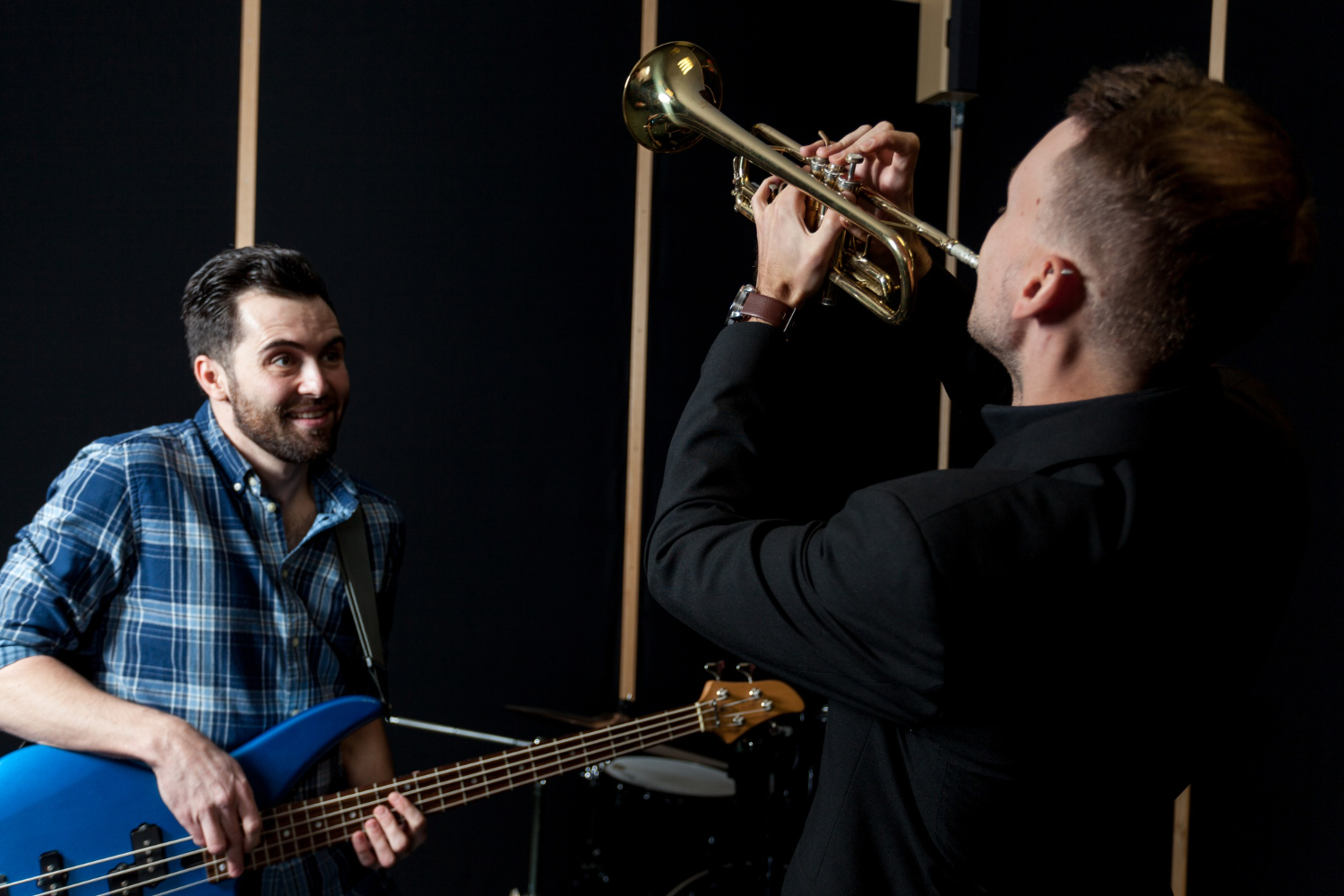When I first started writing songs, the terms verse and chorus felt straightforward but knowing the real difference between them made all the difference in how I crafted my music. These two sections are the building blocks of most songs, but their roles are very distinct. Getting clear on verse vs. chorus changed how I approached structure, melody, and storytelling.
Many songwriters, especially beginners, struggle to make verses and choruses work together smoothly. Sometimes the verse feels disconnected from the chorus, or the chorus doesn’t pack enough punch. In my experience, the key lies in knowing what each section is meant to do and how to use them to complement each other.
Let me walk you through the differences, purposes, and creative possibilities of verses and choruses based on what I’ve learned and practiced over time.
The Role of the Verse in a Song
The verse acts as the narrative engine of a song. It’s where the story unfolds, details emerge, and the setting or situation takes shape. When I write verses, I see them as mini chapters or scenes that set the tone and provide context.
Verses usually carry different lyrics each time they appear, moving the story forward or exploring different facets of an idea. The melody tends to be somewhat consistent, but the emphasis is on lyrical development.
In the songs I’ve worked on, the verse often uses a more relaxed or subtle melody, allowing space for the words to be heard and understood. It’s not necessarily the catchiest part of the song, but it’s crucial for emotional connection.
The instrumentation during verses is often more restrained, supporting the vocals without overpowering them. This dynamic helps the verses feel intimate or thoughtful.
What Makes a Chorus Stand Out
The chorus is the emotional and melodic centerpiece of a song. It’s the part that listeners remember, sing along to, and often associate with the song’s identity.
Unlike verses, the chorus usually repeats the same lyrics each time it appears. This repetition reinforces the song’s main message or feeling.
When I craft choruses, I focus on making them catchy, memorable, and impactful. The melody typically soars higher or becomes more energetic compared to the verse. This creates a sense of release or climax.
Choruses often contain the song’s title or a key phrase, making them easy to recall. The instrumentation is usually fuller, with layers of sound and harmony to boost the emotional intensity.
How Verse vs. Chorus Create Balance
The interaction between verse and chorus gives a song its shape and flow. Verses build tension or tell a story, and choruses provide a satisfying payoff.
When I’m writing, I think of the verse as the setup and the chorus as the hook. The verse invites listeners into the song’s world, while the chorus invites them to feel and remember.
This balance keeps the listener engaged. Too much verse without chorus can feel monotonous; too much chorus without verse might lack depth.
Melodic and Rhythmic Differences
Melodically, verses tend to be more subdued, with smaller intervals and repetitive patterns. Choruses often use broader melodic leaps and more dynamic phrasing.
Rhythmically, verses can be more varied or syncopated, depending on the lyrical flow. Choruses generally have a steady, driving rhythm that encourages singing along.
When I analyze popular songs, I notice how these differences help create contrast and highlight the chorus as the focal point.
Lyrics: Storytelling vs. Emotion
The lyrics in verses usually provide details, narrative progression, or background information. For example, describing a situation, a character’s thoughts, or a sequence of events.
Choruses distill the essence of the song’s emotion or message. They often express universal feelings like love, loss, hope, or joy in simple, direct language.
This difference in lyrical purpose is why verses change lyrics throughout a song, while choruses repeat the same lines.
Examples That Illustrate Verse vs. Chorus
Looking at songs that have stood the test of time helps me see verse and chorus in action.
Take “Let It Be” by The Beatles. The verses tell a story with different lyrics each time, painting a comforting picture. The chorus, with its repeated phrase “Let it be,” offers a memorable and uplifting refrain that anchors the song.
In “Rolling in the Deep” by Adele, the verses build tension with storytelling and emotional detail, while the chorus bursts out with powerful repetition and anthemic energy.
These examples show how verse vs. chorus work together to create a compelling musical journey.
How To Approach Writing Verses
When I write verses, I focus on clarity and progression. The goal is to move the story forward or deepen the listener’s understanding.
I try to keep the melody interesting but simple enough that the lyrics are clear. The words should paint vivid pictures or convey emotions that prepare the listener for the chorus.
Sometimes I write multiple verses before finalizing the chorus, to make sure the narrative feels complete.
Tips For Crafting Choruses
When I work on choruses, I concentrate on making them catchy and emotionally resonant.
Starting with a strong hook phrase or title helps anchor the chorus. Then I experiment with melodies that are easy to sing and have an uplifting or powerful feel.
I also pay attention to how the chorus fits rhythmically with the verses, so the transition feels natural.
Using repetition wisely in the chorus helps imprint it on the listener’s mind without feeling overdone.
Common Mistakes In Verse vs. Chorus Writing
A mistake I’ve encountered often is treating verses and choruses too similarly. When they sound alike, the song loses its dynamic contrast.
Another pitfall is making the chorus too complex or wordy, which can dilute its impact. Choruses need to be clear and memorable.
On the flip side, verses that try too hard to be catchy can overshadow the chorus or confuse the song’s emotional arc.
Blurring The Lines: When Verse And Chorus Merge
Some songs play with the boundaries between verse and chorus. For example, a “pre-chorus” or a repeated refrain within verses can create hybrid sections.
I’ve experimented with songs where the chorus introduces new lyrics or the verse repeats key phrases for emphasis.
While these approaches can add interest, it’s important to keep the overall structure coherent and the roles of verse vs. chorus clear.
The Importance Of Transitions Between Verse And Chorus
Smooth transitions make the difference between a song that flows and one that feels choppy.
When writing, I focus on melodic or rhythmic cues that prepare the listener for the chorus.
Sometimes, adding a brief instrumental fill or a slight pause enhances the impact.
Experimenting with different transition ideas has helped me master the timing and flow between verse and chorus.
How Instrumentation Supports Verse And Chorus
In my experience, instrumentation shifts help highlight the differences between verse and chorus.
Verses often feature sparser arrangements, focusing on vocals and rhythm.
In choruses, I add layers, harmonies, extra percussion, or instrumental hooks, to lift the energy.
This contrast reinforces the structural roles and keeps the listener engaged.
Personal Stories About Verse vs. Chorus
I recall working on a song where my initial chorus felt weak because it didn’t contrast enough with the verse. The melody was too similar, and the lyrics lacked punch.
After revising to create a more energetic chorus with a different melody and repeated hook phrase, the song transformed.
That experience taught me the power of clear verse vs. chorus distinctions.
Verse vs. Chorus In Different Genres
Different musical genres approach verse and chorus differently.
In country music, verses often tell detailed stories, while choruses deliver heartfelt, singable refrains.
In rock, choruses tend to be explosive and anthemic, with verses more subdued.
In electronic music, the chorus might be instrumental or drop-based, with vocal verses acting as buildups.
I adapt my writing style depending on the genre but keep the core principles of verse vs. chorus in mind.
Tips For Songwriters On Balancing Verse And Chorus
Balance is key. I recommend starting with a strong chorus idea and then crafting verses that build toward it.
Don’t neglect the transitions, these make or break the flow.
Keep verse lyrics fresh and evolving, and make choruses simple and memorable.
Recording rough drafts and listening back helps identify if verse and chorus sections complement each other.
How Technology Helps In Crafting Verse And Chorus
Using digital audio workstations (DAWs) and recording software has helped me experiment with verse and chorus arrangements more freely.
Looping sections, trying different instrument layers, and adjusting dynamics give instant feedback.
This trial-and-error process accelerates learning how to balance verse vs. chorus effectively.
Final Thoughts On Verse vs. Chorus: What’s the Real Difference?
Knowing the real difference between verse and chorus unlocks a songwriter’s potential to craft compelling music.
Verses tell the story with evolving lyrics and melodies, while choruses deliver the emotional core through repetition and energy.
Getting these parts to work together seamlessly creates songs that engage and move listeners.
Mastering verse vs. chorus doesn’t come overnight, but with practice and attention to these roles, your songwriting will deepen and improve.
The journey of writing songs is always evolving, and focusing on verse vs. chorus is a fundamental step toward making your music resonate.

